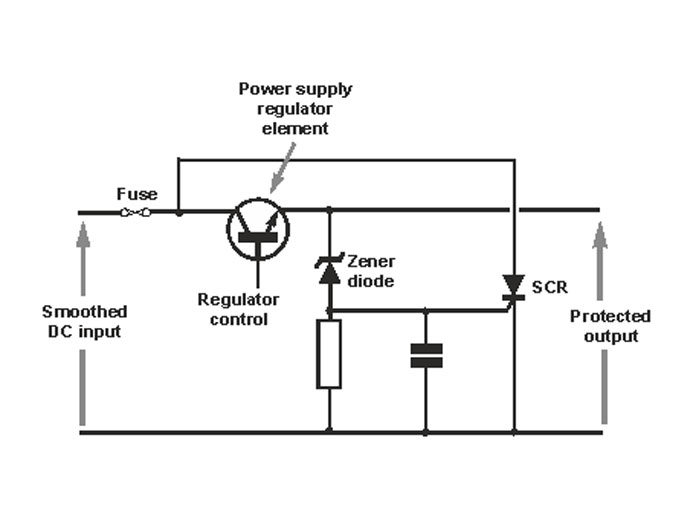What is Over Voltage Protection?
Over voltage protection is a power supply feature which shuts down the supply, or clamps the output, when the voltage exceeds a preset level.
Most power supplies use an over-voltage protection circuit to prevent damage to the electronic components. The impact of an over-voltage condition varies from one circuit to the other and ranges from damaging the components to degrading the components and causing circuit malfunctions or fire.
An over-voltage condition might occur in the power supply due faults inside the supply, or from external causes such as those in the distribution lines.
The magnitude and duration of the over-voltage are some of the major considerations when designing an effective protection. The protection involves setting a threshold voltage above which the control circuit shuts down the supply or diverts the extra voltage to other parts of the circuit such as capacitor.
Ideal characteristics of an over voltage protection circuit
- Prevent the excess voltage from being applied to the components.
- The protection circuit should not interfere with the normal function of the system or circuit. The protection circuit should not load the power supply and cause related voltage drops.
- The protection circuit should be able to distinguish between normal voltage fluctuations and harmful over-voltage.
- Be fast enough to respond to transient events that can damage the power supply and downstream components.
- The OVP method should not to have false trips or undetected real over-voltage conditions. This can be a nuisance in the case of false trips and also dangerous if it is unable to see the real over-voltage conditions.
The over voltage protection circuit may be constructed using discrete components, integrated circuits, mechanical devices such as relays, etc. These can either connected internally or externally depending on the circuits involved.
There are various protection circuit designs, each with its merits, mode of operation, sensitivity, ability, and reliability. The protection can either clamp off the excess voltage, or completely shut down the power supply.
A crowbar over-voltage protection circuit
A crowbar circuit provides one of the simplest, cheap and effective over-voltage protection methods. This is usually connected between the regulated output and the protected circuit or load. The series regulating transistor controls the output current and voltage while the crowbar consists protects the load when the voltage exceeds a preset value. A basic circuit consists of:
- Silicon controlled rectifier (SCR)
- Zener diode
- Resistor
- Capacitor
Over-voltage protection crowbar circuit
During the normal operation, the zener diode is reverse biased and does not conduct, all the current through the series transistor appears at the output. Once the voltage rises and goes beyond the zener breakdown voltage, the diode breaks down and starts conducting. The current develops a voltage across the resistor which then triggers the SCR. This places a short circuit across the output and all the current is sank into the ground. This caused the fuse to open and removes the voltage from the series transistor and the protected circuit.
The zener diode selected must be slightly above the output voltage. The capacitor prevents the triggering of the SCR by short spikes.
The simple circuit is widely used due to its effectiveness; however it has some limitations, such as Zener diode being not adjustable while the best tolerance for the diode is 5%.
The SCR firing voltage must also be designed to be far above the power supply’s output voltage to prevent erroneous firing by short spikes such as those generated when powering RF circuits.
